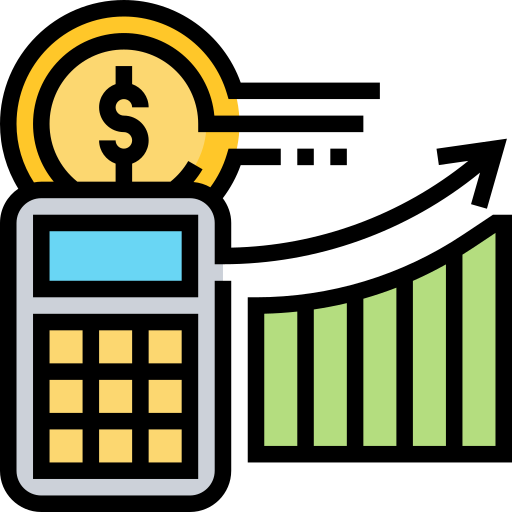What is the Price-to-Book (P/B) Ratio?
The price-to-book (P/B) ratio is a financial metric used to compare a company’s market value to its book value.
The P/B ratio is calculated by dividing the company’s market capitalization by its total assets. The higher the P/B ratio, the more undervalued the stock.
When used in conjunction with other financial ratios, it can help investors determine if a stock is over or undervalued.
What Does P/B Ratio Mean for Investors?
The P/B ratio is useful for investors because it helps them determine whether the market is under or overvaluing a stock. For example, if the P/B ratio of a company is 10, it means that investors are valuing that company at 10 times its book value.
A high P/B ratio (over 1) indicates an overvalued stock; conversely, a low P/B ratio (below 1) indicates an undervalued stock.
The P/B ratio can also be used to compare companies within the same industry or sector. For example, if two companies have similar levels of debt and earnings but different P/B ratios, then investors might conclude that one company has more potential for growth than another.
You should also keep an eye on how this number changes over time. If it goes up or down suddenly, it could be an indication that something has changed in the market or with your company’s performance.
What is a Price to Book Ratio Calculator?
A price to book ratio calculator is a tool that can be used to calculate the price-to-book value of a company.
It is often used by investors and analysts who are trying to determine whether or not a company is undervalued.
This calculator will help you determine the price-to-book ratio of any given company.
How to Calculate Price to Book Ratio?
You can calculate price to book ratio by dividing a stock’s current market value by its book value.
To calculate the price-to-book ratio, divide the market value of common stock by the book value per share. The formula for calculating the price to book ratio is as follows:
Price to Book (P/B Ratio) = Market Share Price / Book Value of Equity Per Share
If you are looking to calculate the price to book ratio of your own business, there are two main steps that you need to follow:
- Calculate the market value of equity by multiplying the number of shares outstanding by the current share price.
- Calculate the book value per share by dividing total stockholder’s equity by total shares outstanding.
Once you have these two values, you can plug them into the formula above to get your price-to-book ratio.
How Does this Price to Book Ratio Calculator Work?
This Price to Book Ratio Calculator is designed to help you determine the current value of a company from its book value, or total assets minus intangible assets, divided by its stock price.
You’ll enter both values into the calculator and it will give you a result that shows how much you can expect to pay for each dollar of book value.
The calculator also allows you to adjust the book value and stock price inputs to see how it impacts your price-to-book ratio. If you change the company’s book value, the result will show you what effect that has on your valuation. You can also change its stock price and see how this affects the price-to-book ratio.
Example of How to Use the P/B Ratio
The P/B ratio is a financial ratio that compares the market value of a company’s equity to its book value. It’s often used to compare companies in different sectors and industries.
Let’s say you’re looking at two companies: Company A has a book value of $100 million, and Company B has a book value of $200 million.
You can use the p/b ratio to compare their values by dividing Company A’s market cap ($1 billion) by its book value ($100 million), which gives you 10. The same calculation for Company B gives you 20.
This indicates that Company B is trading at twice the price per dollar of net assets as Company A—which could mean higher risk or greater potential reward for investors depending on what kind of company it is.
Uses of P/B Ratio
The price-to-book ratio is used in stock evaluation and can be useful for determining whether an investment has good value or not. However, it should be used alongside other metrics when evaluating stocks.
Here are some uses for P/B ratios:
1. Identify overvalued stocks
A high P/B ratio may indicate that a stock is overvalued and due for correction. If you own shares of an overvalued company, you may want to consider selling if your investment thesis no longer holds true or if there are better opportunities elsewhere.
This can help you avoid losses if the company’s share price declines after you sell your shares.
2. Identify undervalued stocks
A low P/A ratio may indicate that a stock is undervalued and due for appreciation . If you find a low P/B ratio, consider buying the stock if you believe its market value will increase over time. This can help you build wealth by earning gains on your investment.
3. Identify fair valued stocks
A stock with a P/B ratio that is near 1 may be fairly valued. This means that the company’s share price has already accounted for its earnings, growth and other factors.
You may want to consider selling if your investment thesis no longer holds true or if there are better opportunities elsewhere.
Limitations of Using the P/B Ratio
The P/B ratio is used together with other ratios to get a more complete view of a company’s financial health. However, there are some limitations to using this metric.
The first limitation is that it does not take into consideration intangible assets such as goodwill or patents. This means that if a company has been acquired or has purchased another company and paid more than its book value, then the P/B ratio will show a lower value than what should be expected for those assets.
Another limitation of this metric is that it only considers balance sheet assets and liabilities without taking into account other important factors such as cash flow or earnings power.
Thus, if you want to compare two stocks with different characteristics or metrics then you should use another valuation metric instead of relying solely on the P/B ratio alone!
FAQs
How do you calculate price to book ratio?
The price to book ratio is calculated by dividing the market value of a company’s shares by its book value.
Why Is the Price-to-Book Ratio Important?
The P/B ratio can help you determine whether a stock is overvalued or undervalued. Overvalued stocks are risky because they may not perform as well as expected. Undervalued stocks offer a good opportunity to buy at a discount and potentially earn higher returns over time.
What is a good price to book ratio?
A good price to book ratio is when the market value of a company’s equity is equal to its book value. In other words, it means that the company’s assets are valued at their estimated market value.
Is a higher price book ratio better?
A higher price to book ratio is usually considered better, but it depends on the company’s industry and other factors. A company with a higher price to book ratio is likely more valuable than one with a lower price to book ratio. However, this does not mean that the company will always be more profitable or have better growth prospects than a company with a lower ratio.





